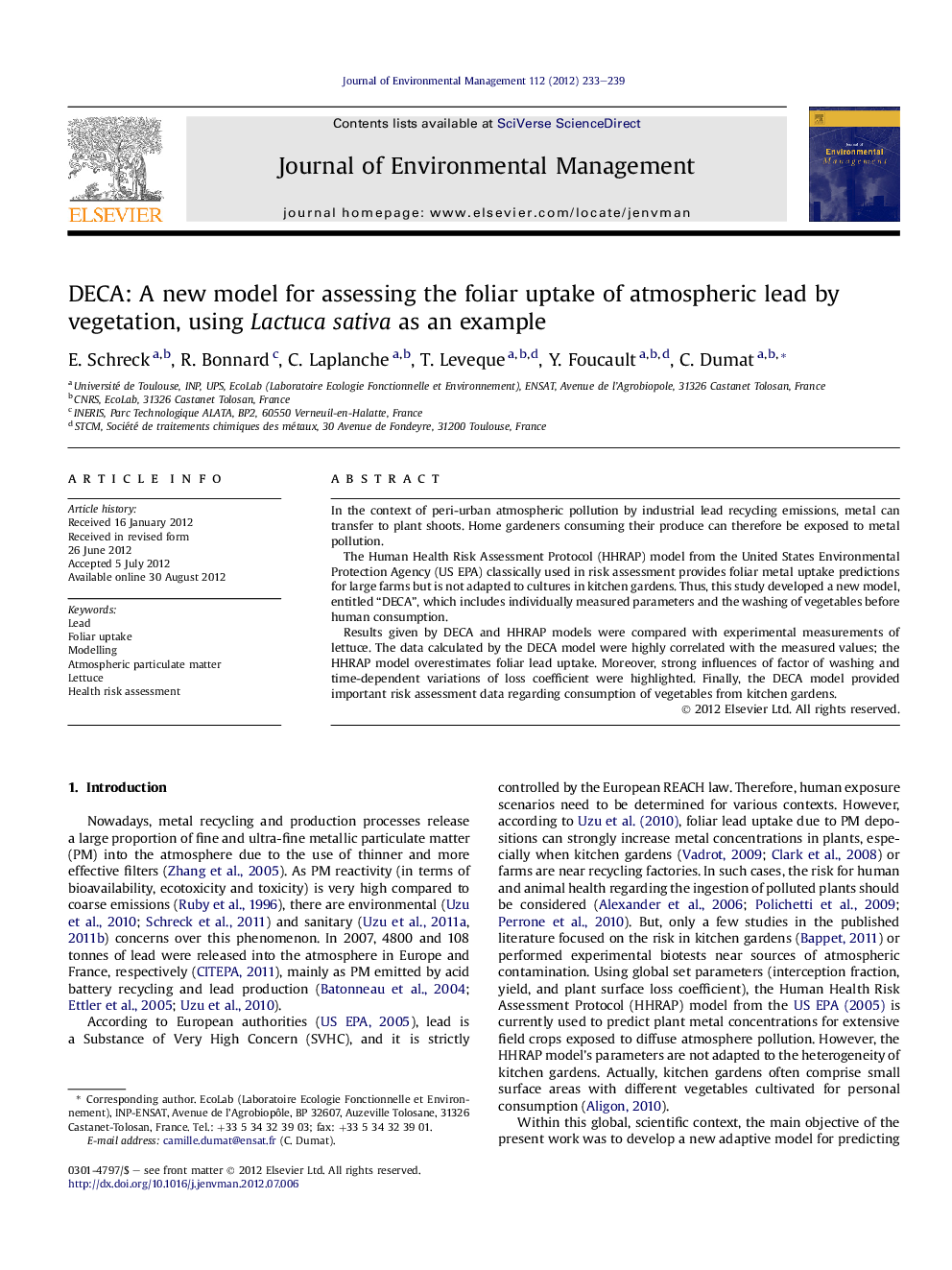| کد مقاله | کد نشریه | سال انتشار | مقاله انگلیسی | نسخه تمام متن |
|---|---|---|---|---|
| 1056427 | 1485300 | 2012 | 7 صفحه PDF | دانلود رایگان |

In the context of peri-urban atmospheric pollution by industrial lead recycling emissions, metal can transfer to plant shoots. Home gardeners consuming their produce can therefore be exposed to metal pollution.The Human Health Risk Assessment Protocol (HHRAP) model from the United States Environmental Protection Agency (US EPA) classically used in risk assessment provides foliar metal uptake predictions for large farms but is not adapted to cultures in kitchen gardens. Thus, this study developed a new model, entitled “DECA”, which includes individually measured parameters and the washing of vegetables before human consumption.Results given by DECA and HHRAP models were compared with experimental measurements of lettuce. The data calculated by the DECA model were highly correlated with the measured values; the HHRAP model overestimates foliar lead uptake. Moreover, strong influences of factor of washing and time-dependent variations of loss coefficient were highlighted. Finally, the DECA model provided important risk assessment data regarding consumption of vegetables from kitchen gardens.
► This article focuses on the development of a new model for lead uptake prediction.
► Model parameters were checked weekly on lettuces.
► The results show the importance of plant washing to reduce the ingestion of metals.
► The DECA model shows a better correlation with measured values.
► This article gives prediction data for risk assessment after vegetable ingestion.
Journal: Journal of Environmental Management - Volume 112, 15 December 2012, Pages 233–239